When planning your landscape, you no doubt at some point have considered adding roses to enhance the aesthetics and add some color. Roses are indeed a fantastic addition to your yard, however, if you are not familiar with planting roses let alone choosing what type or the best time to plant roses, theses unknowns potentially put a hard stop to that idea.
It is no secret that the common census is that planting and taking care of roses can be very involved and time consuming without guaranteed results. Although there is some truth to that statement if your intention is growing prize winning roses for competition, but for the average gardener growing gorgeous roses is not only attainable but, easy!

The decision to add roses to your yard starts with doing a little research and asking yourself a few questions such as
- What type (color, fragrance) of rose would best fit my vision for my landscape?
- How much space to do I have to commit to growing roses?
- What climate/region do I live in?
- How much time am I willing commit to caring for my roses?
The best place to start is to determine what kind of rose can survive in the area where you live, usually divided into “growing zones” such as Northeastern, Southeastern, Southwestern, Midwestern and so on. This is important to know before selecting your roses because this will afford you the absolute best chance to grow roses that thrive. Where you live has variables that can greatly affect the outcome of planting roses due to climate, soil and rainfall amounts.

Once you establish your region, you can confidentially move to the next step – the rose variety that will best suit your lifestyle. In your basic research you have probably found that the word “rose” covers many types of plants and flowers under that umbrella.
The rose bush or shrub (bushes tend to grow larger than shrubs) is by far the hardiest of the rose family, producing beautiful flowers on repeat each season with little fuss and no more than simple maintenance. The most popular rose bush which you have probably seen and admired is the “Knockout Rose,” which is a variety that is extremely forgiving for first time growers.
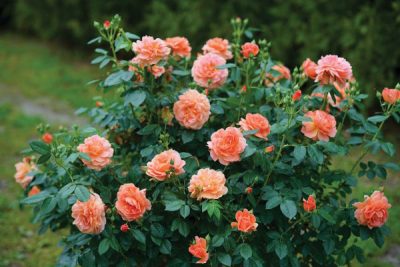
Climbing roses are a great option when there is minimal space. The rose itself is not a vine but can be trained to grow along a support, most often a white lattice structure that highlights the pops of color from the blooming flowers.
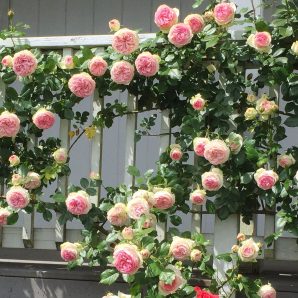
Groundcover roses are just that-they will grow close to the ground and spread out providing a wider coverage than a bush. Typically, easy to care for, groundcover roses are an excellent choice for the rose novice.
Within these broad categories of roses are sub-categories such as Hybrid Tea, Miniature, Rambling, Old Garden and Moss. Landing on the perfect species for your yard will take some research but all in all what you select should be based upon what you find visually appealing and conducive to your lifestyle and a complementary addition to your current landscaping plans.
What is the Best Time to Plant Roses?
Although there are a lot of variables to consider when deciding to plant roses, the general rule of thumb, no matter what climate you are, spring is the best time to plant roses. Roses typically bloom in both the spring and the fall and most varieties will follow this pattern. If you live in the sunny regions of the country, you have the option of having year-round blooms with some varieties.
When to plant roses just like planting anything in your garden will primarily depend upon where you live. Certain types of roses will do better in terms of survival and robust blooms in particular climates versus others.

Thankfully, this is not something that you need to guess at because the USDA has designed a “Plant Hardiness Zone” map that will assist you in knowing exactly where you are located, in terms of planting seasons.
When you are looking at what varieties of roses to include in your garden, this map, indicating what region is best suited for what flower or shrub type, is usually located somewhere on the label. Make sure you are consulting this map and viewing the recommendations on the label before buying to save you headache and heartache down the road.
Roses of Different Types
The next step in your rose journey is thinking about the type of rose you would like to start adding to your landscape design. Even the hardiest of roses require some knowledge of the specific care for its variety. Some of the most popular for novice rose gardeners are:
Knock-Out Roses
The Knock-Out brand of roses was developed by Will Radler, a rose breeder from Wisconsin in response to the demand for a temperate breed that anyone could plant versus the delicate varieties that required intense care.
Knockout Roses are a shrub rose that bloom in a variety of colors. Blooming from spring to frost, you can use Knockout Roses for the main event or as borders in your garden. Notoriously hardy, they are known to be pest resistant and self- sustaining, meaning that no “dead heading” is required. (Deadheading is the process of pruning and removing faded blooms, often necessary for other breeds.) They can be planted in most zones with the preferred pH level between 5.5-6.5 which is considered neutral and will survive with winter protection to come back every spring.
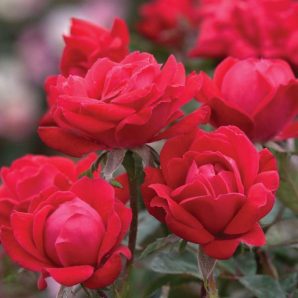
Lenten Roses
Lenten roses are a member of the buttercup family, given their name because they typically bloom around Lent and have rose shaped flowers. They are available in a large variety of colors and make a great option for a ground cover as they spread as they grow. Their early bloom makes them a favorite of gardeners, as well as the fact that they are relatively easy to maintain.
Best suited for zones 4-9 and planted in early spring or late fall, this perennial is happiest in partial shade is a richer soil with a slightly higher than average pH that is moist and allowed to drain. One important note about the Lenten Rose, is that this variety is toxic so keeping it away from pets (and curious humans) is imperative. The good news is that this rose will repel deer and rabbits ensuring that your plant will survive around wildlife.
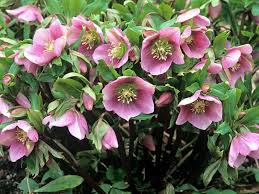
Climbing Roses
Climbing roses offer a chance to add roses to your garden if you have limited space or a perfect way to add beauty to a fence or the side of your home when encourage to grow up a trellis. This is one variety that you really need to consider the space where you will be adding the plant-some climbing roses can climb up to 14 feet and as wide as 10 feet.
Planting climbing roses is best done in slightly acidic soil in the late winter or early spring for a summer bloom. They like the sun so planting where there is good light is essential and daily watering is necessary. Climbing roses tend to be a bit more disease prone so taking care to notice and treat any infestations will keep them at their peak.

Miniature Roses
Miniature are a fan favorite and for good reason-they are adorable! Specifically bred to look like their larger counterparts, they come in a large variety of colors and are surprisingly sturdy. Miniature roses can stand alone in any garden or added to flower beds as borders. They also do very well on the patio in large pots for those without a yard or anyone that would like a charming addition to their outdoor living space.
The best time to plant miniature roses is late winter/early spring in zones 5-9. They are perennials so they will bloom every year and they like the soil to be at a pH level between 6.0-7.0. The miniature rose prefers that full sun and moist soil, so a generous watering is required to keep them looking good at least once a week.

Best Time to Plant Roses in 5 Rose-Loving States
If you are lucky to live in one of these states named below, then you have probably seen an abundance of roses in the gardens throughout. If you look at the USDA Plant Hardiness Map, you might note that within each state the recommended planting times can vary. This is because one part of the state may have different conditions in soil and climate at any given month so when to plant roses might greatly differ depending on where you are located within the state. As discussed, studying your “zone” and specific care instructions for your climate and soil type is vitally important for success. These five “rose loving” states are known for being very welcoming to most varieties due to optimal climate and soil conditions.
Arizona
Designated in the Southwestern Zone on the USDA Plant Hardiness Map, any rose variety that loves the heat will no doubt thrive in Arizona. Such varieties as Hybrid Teas, Old Garden and Miniatures will do well with the direct sunlight and desert environment with drier soil. Northern Arizona will require planting in March or April because of the chance of below freezing nigh temps, while Southern Arizona will be fine for planting in December or January where winters are mild and warm conducive to successful planting.

Colorado
Known of course for harsh winters, roses can still thrive and survive in the Colorado summers. The preferred time to plant is in the spring after the last frost, to avoid damage to delicate blooms. The region does require a tougher rose due to climate and soil variations, but they can still be grown to enhance any garden or patio. The best varieties for the state are hybrid tea, miniature, floribunda, grandiflora, climbing and shrub, which are very hardy and forgiving.
Texas
If you are not growing “yellow roses” in Texas, will you be asked to leave? Kidding aside, roses of all varieties do very well in Texas, but planting seasons are as varied as the regions across the large state because of extremely hot summers and the possibility of very cold winters and heavy precipitations via snowstorms and hurricanes. Climbing roses, Hybrid Tea and KnockOut all will produce gorgeous blooms when planted according to the region-most are recommended to be planted in the early spring or fall, before or after the chance of frost.
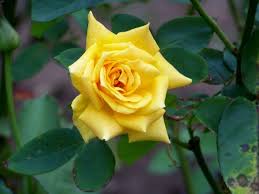
California
It is safe to say that the state of California has every climate there is from snowy winters in the north to scorching hot summers with desert like conditions near the southern border. It is especially important to consult the USDA map if you happen to live here because planting times as well as recommended varieties will really depend on your location with zones encompassing 4b to 11a. Planting seasons can be year-round for some areas while most of Northern California will be best rewarded with planting in January and February. All types of roses can be grown in California, with the opportunity to enjoy them year- round in some southern state regions. (Hello Pasadena! If you have never watched the Tournament of Roses Parade make sure to tune in this year-or view past years parades on YouTube)

North Carolina
The terrain in North Carolina ranges from beach to mountain and most soil here will require some manipulation to bring the pH to optimal levels for growing. The state does have hot summers, but the mountain regions can also see significant snowfalls so planting best practices will depend on where you live within the state. The Western Carolinas do often have frost, so a spring planting would be the best option if you live here whereas residents near the coast could opt for earlier. Any rose that suits your tastes can be successfully grown in North Carolina with the favorites being Hybrid Teas, Floribunda, Grandiflora, Climbing and Shrubs.
In Conclusion
It is easy to become overwhelmed with the information available on roses but do not let that stop you from pursuing this exquisite, stunning addition to your yard or garden and remember the best time to plant roses is Spring.
Their color, fragrance and allure are worth the time and effort it takes to do your research on which varieties will best suit your climate, soil, and lifestyle.
Take the time to include roses in your landscape plans this season and get ready to enjoy the grand results for many years to come.


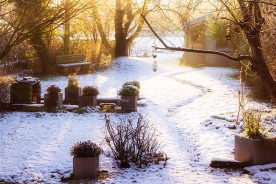
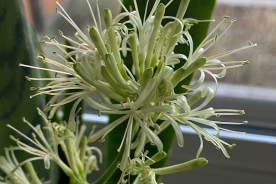

No Comments